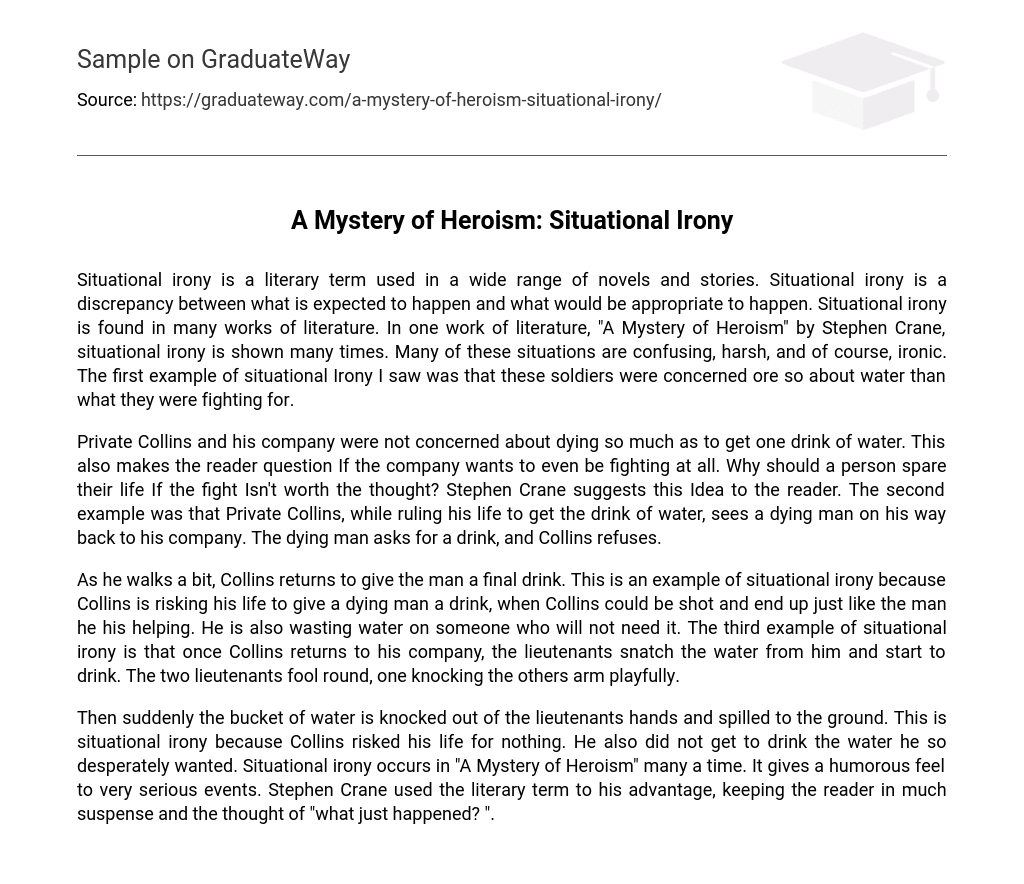Situational irony, a literary term, is present in numerous novels and stories, representing the disparity between expected and appropriate outcomes. This irony is frequently witnessed in literature, including Stephen Crane’s “A Mystery of Heroism,” where confusing, harsh, and ironic situations abound. One notable example of situational irony is the soldiers’ preoccupation with water rather than their cause.
Private Collins and his company were more preoccupied with quenching their thirst for water than with the fear of dying. This raises doubts in the reader’s mind regarding the company’s willingness to engage in the fight. Why should someone risk their life if the cause is not worth fighting for? Stephen Crane presents this notion to the reader. Another instance exemplifying this is when Private Collins, who dedicates his life to obtaining a drink of water, encounters a dying man on his way back to his comrades. The dying man desperately pleads for a drink, but Collins declines.
Collins demonstrates situational irony as he takes a risk by providing a dying man with a final drink during his walk. This action puts Collins in danger of being shot and facing the same fate as the man he is trying to assist. Furthermore, Collins wastes water on someone who no longer requires it. Additionally, another instance of situational irony occurs when Collins rejoins his company, as the lieutenants take the water he had obtained and begin drinking it. The two lieutenants engage in playful behavior, with one lightly striking the other’s arm.
Suddenly, the lieutenant’s bucket of water is knocked out of his hands and spills onto the ground. This event exemplifies situational irony as Collins risked his life for nothing and was unable to quench his desperate thirst. Throughout “A Mystery of Heroism,” situational irony occurs frequently, adding a humorous twist to otherwise serious situations. Stephen Crane employs this literary technique effectively, leaving readers in suspense and questioning what just transpired.





